By Guest Blogger Brandi Blaylock
Every smile has a story. Stories of happiness, joy, peace, and understanding. This story is no exception.
While lying on the examination table with the chilly and sticky conducting jelly on my belly at my 20 week ultrasound, I had one question on my mind: “Is it a boy or a girl?” I desperately wanted to either start washing my daughter’s clothes in preparation for baby number 2 or begin purging them and converting the nursery closet from pink to blue. As my maternal fetal medicine specialist moved his wand over my protruding stomach I felt a strong pause when he said “Well, it looks like we definitely have a cleft lip here, maybe a cleft palate as well.”.
I immediately had a steady stream of thought bubbles with questions and personal assumptions invisibly pop up above my head. Is this defect because I accidentally forgot to take my prenatal vitamin last Wednesday? Doesn’t this only happen to malnourished babies in third world countries? Maybe I should have fought through the nausea in week 8 to eat more than just grilled cheese. What other deformities should I be prepared for? What will people say when they see my baby? All of this culminated with my doctor telling me a cleft was “no big deal” and I could enjoy the rest of my pregnancy as he handed me the name and number of a pediatric craniofacial surgeon for a consult. No big deal? In one hand I was holding a 4-D image of my baby with what looked like a large tear down the middle of his face, and in the other trembling hand, I had the information for a surgeon whose specialty I didn’t even know existed until this point. It was a big deal…to me.
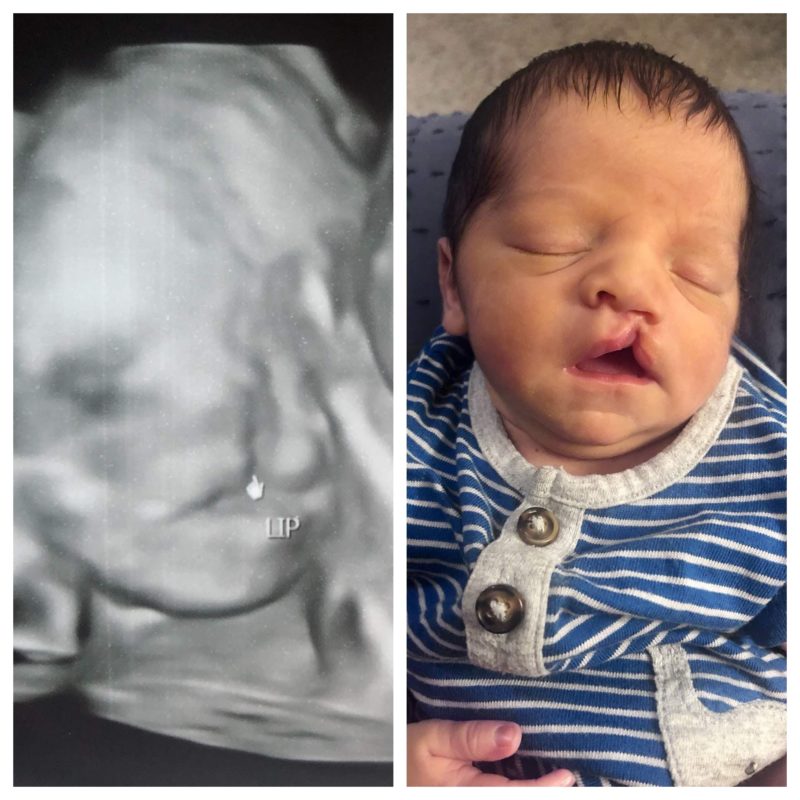
Leaving that appointment, my husband and I went to breakfast to open up the envelope to determine whether we could use the pronoun “he” or “she” instead of “it.” It was a bittersweet time as we found out we were expecting a boy because the uncertainty of the cleft condition and my ignorance on the matter trumped the excitement of the intimate gender reveal. Having the day off of work, I started researching more about cleft conditions.
- One in 700 babies will have a cleft.
- Clefts result from failure of the facial plates to fuse between weeks 4 and 9 of gestation.
- Clefts are usually caused by a combination of genetic and environmental factors, but treated easily by surgery within the first year of life.
These were the hard facts, but I needed more. I needed to know what my son would look like, act like, sleep like, feed like, live like, and what special preparations I needed to consider over the next four months before he made his grand entrance. So I turned to the experts: other mommas of cleft-affected children through a cleft mom support group on social media. (Two of my favorites are here and here.) These women answered ALL of my questions without judgement and shared pictures of their beautiful children (known as the cleftie cuties clan) at different stages in their smile journeys. Google helped me with the facts, but social media prepared my emotions.
As my pregnancy progressed, my husband and I made as many preparations as possible by meeting with a craniofacial surgeon, to reading a children’s book about clefts to our daughter. Because we did not fully know the extent of the condition, we only shared the news of the cleft with a few family members and close friends. I had several ultrasounds and the cleft looked more involved at each scan with a very high likelihood of palate involvement. This would mean breastfeeding wasn’t an option. I clearly remember feeling selfishly devastated by that news as nursing was such a special bonding experience with my first born. I knew I could not let this hinder my true elation about adding a baby boy to our family, so I picked a day 10 weeks before my due date to throw myself a pity-party about this news. Even writing that sounds so pathetic and petty, but I needed to get all of the anxiety and negativity out of my system so I could focus on the true joy to come.
And the joy came on May 30, 2019 at 1:15am. After being induced for high blood pressure, my beautiful Harrison Jack emerged in one push with a healthy cry, head full of black hair, and the sweetest face I had ever seen. I had informed the nurses about his cleft condition so they could do a thorough examination at delivery. A quick look into his mouth revealed a completely intact palate and the moment he was put on my chest he latched perfectly (and continues to do so). I was shocked, surprised, and overwhelmed with love.
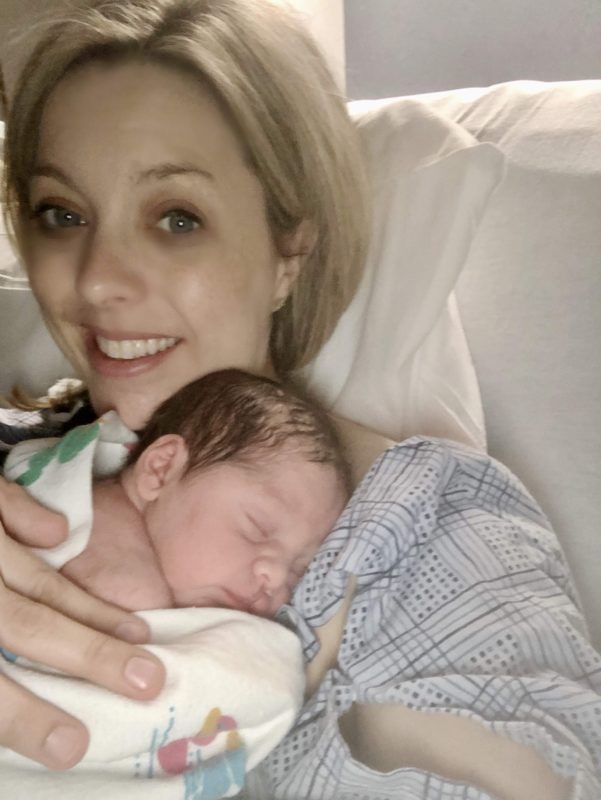
We enjoyed Harrison’s cleft smile for five months before it was time to close the cleft via surgery. During that time, we took at least 5,000 pictures of him and soaked up all of his giant grins. Some people would comment on how cute his smile was and occasionally ask what happened to him. I realized we became very educational and factual in our responses when my 3-year-old daughter stepped up to the plate at the library. Another child pointed at Harrison and said “Mommy, look at his face! His mouth is so weird.” I was used to softly handling these comments and was in no way offended by them, but my daughter handled this one for me by saying “This is my brother. He has a cleft lip. It’s how God made him!” We also found humor in the cleft when we planned to dress him as baby Elvis for Halloween because of his dark head of hair and curled up lip. My daughter insisted on carving a cleft into our jack-o-lantern and also had a temper tantrum at one point because she was mad she wasn’t born with a cleft.
As surgery approached in November, my joy and happiness again turned to feelings of grief and anxiety as I prepared to say goodbye to my baby boy’s first smile, which I now consider my blessed bonus smile. I had a healthy child, but seeing his face change felt like I was tampering with God’s creation even though logically I knew this was for the ultimate good. On November 14, we wrote an important chapter in the story of Harrison’s smile when a highly skilled craniofacial surgeon closed the cleft. The greatest joy was when Harrison gave us a preview of his beautiful new smile within 24 hours of surgery and we got to fall in love with his happy face all over again.
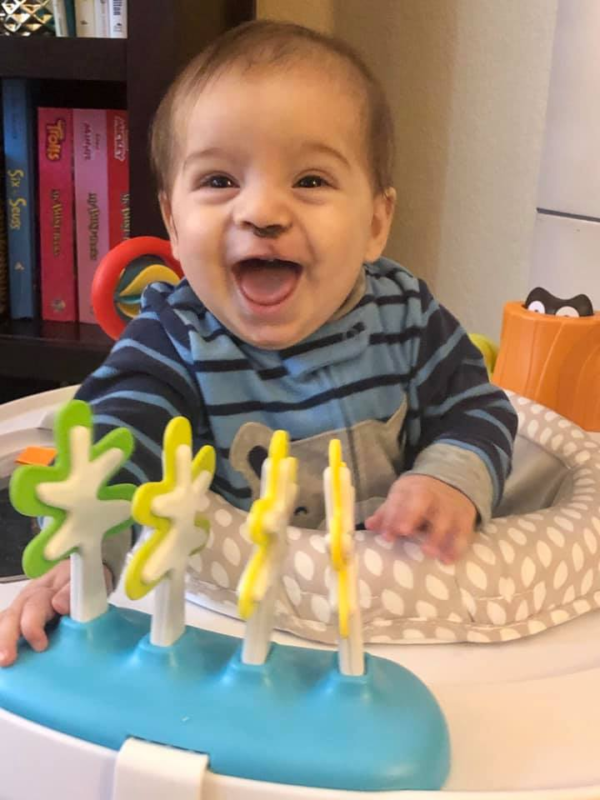
Harrison may have more surgeries in the future and we might be done with the operating room, but the story of this smile is far from over. In addition to the miles of happy memories to come, our family has been forever transformed by this experience. As a mother, I will continue to connect with the cleft community to share our story as others navigate their personal journey. I ultimately want to take an international trip with the non-profit organization Smile Train as a way to pay it forward to not so fortunate families. Most importantly, we will spread smiles to everyone around us and know that every smile has a story.
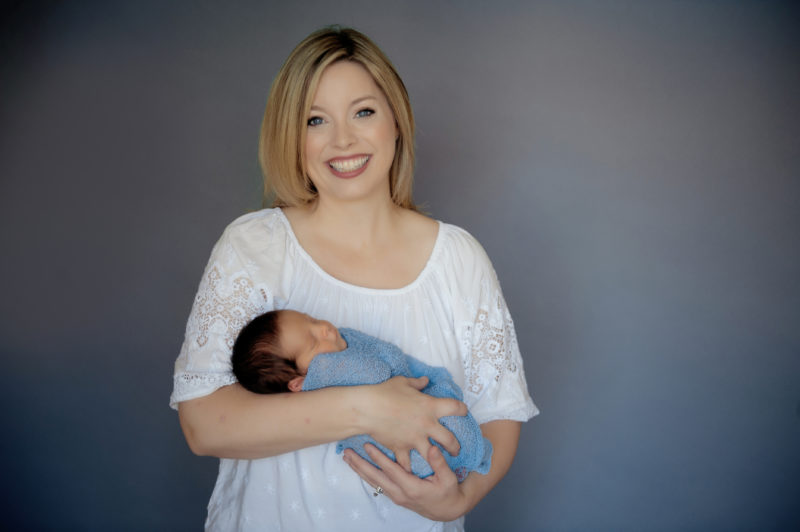
– For more factual research about Clefts, visit cleftopedia.com.
– Another great resource is Cuddles for Clefts – it is an organization founded by a mother of a cleft-affected child. Families can apply to receive a cuddle package before surgery that includes a children’s book about scars, a stuffed animal with a cleft scar, and the Every Smile Has a Story onesie. Families can also sponsor other kids. My plan is to have Harrison pick a child with a November surgery every year when he’s older to sponsor in celebration of his smile anniversary from his surgery.
Want to see more blogs like this and get notifications on local events and happenings? Subscribe to our free weekly newsletters here.

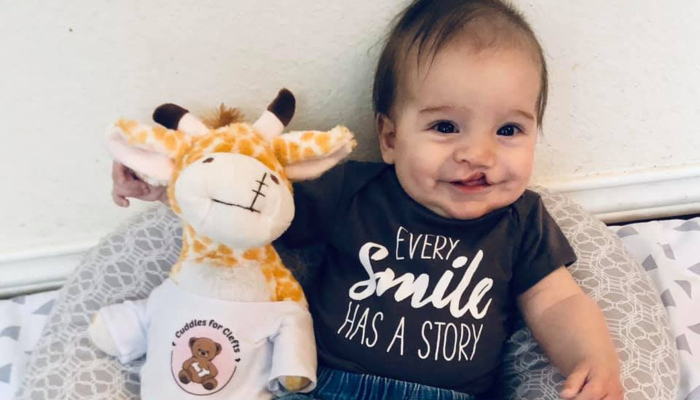















Loved reading about your thoughts and feelings…you will be a blessing for many families!!!
Harrison is adorable! So glad he is healthy and well. Wonderful story!
Your story is beautiful! Thank you for being a strong mom and sharing this with us!